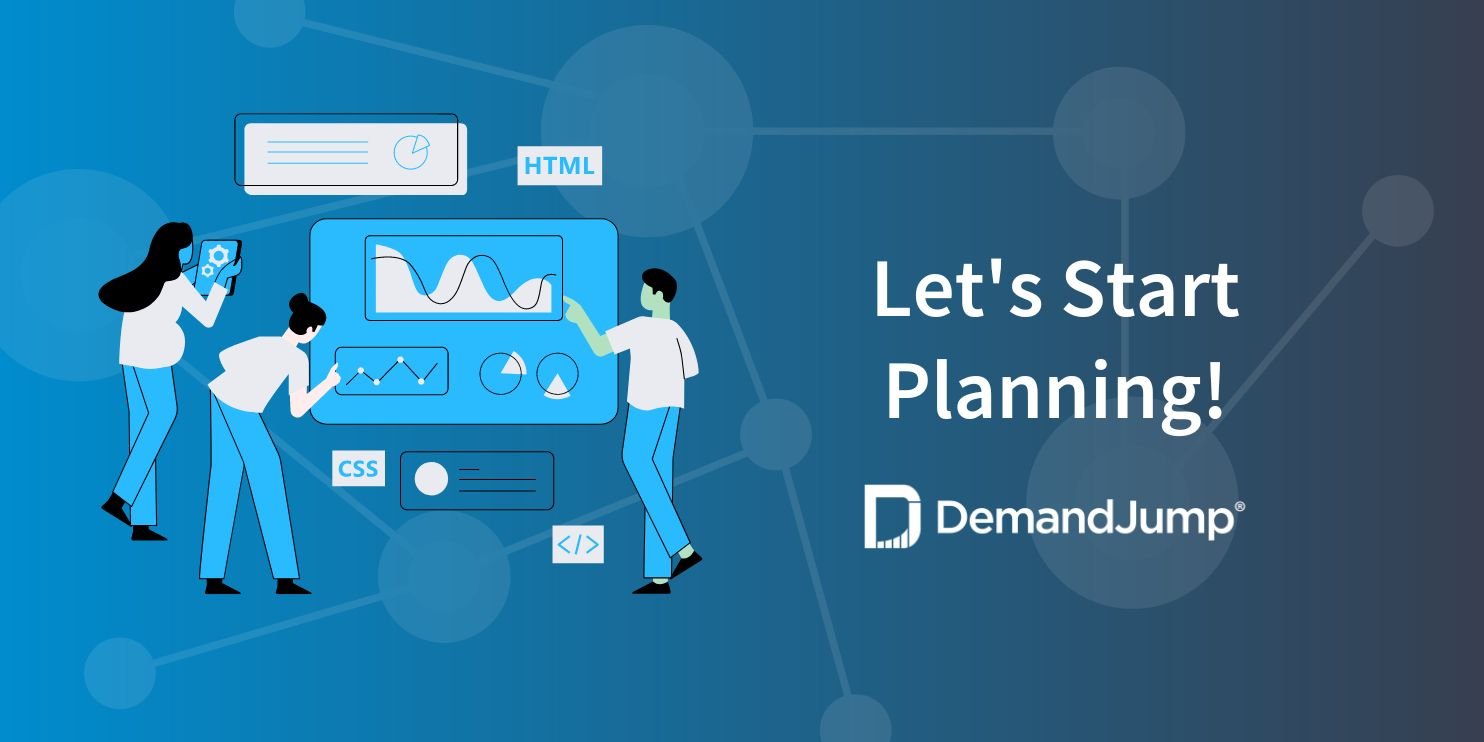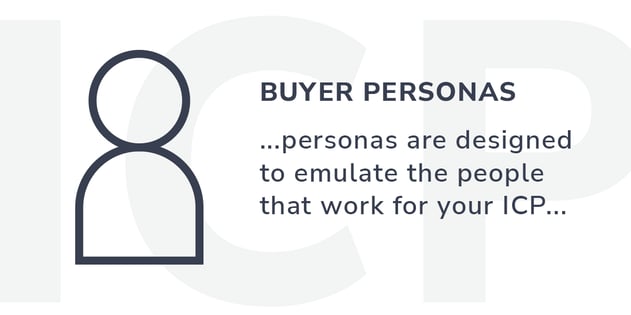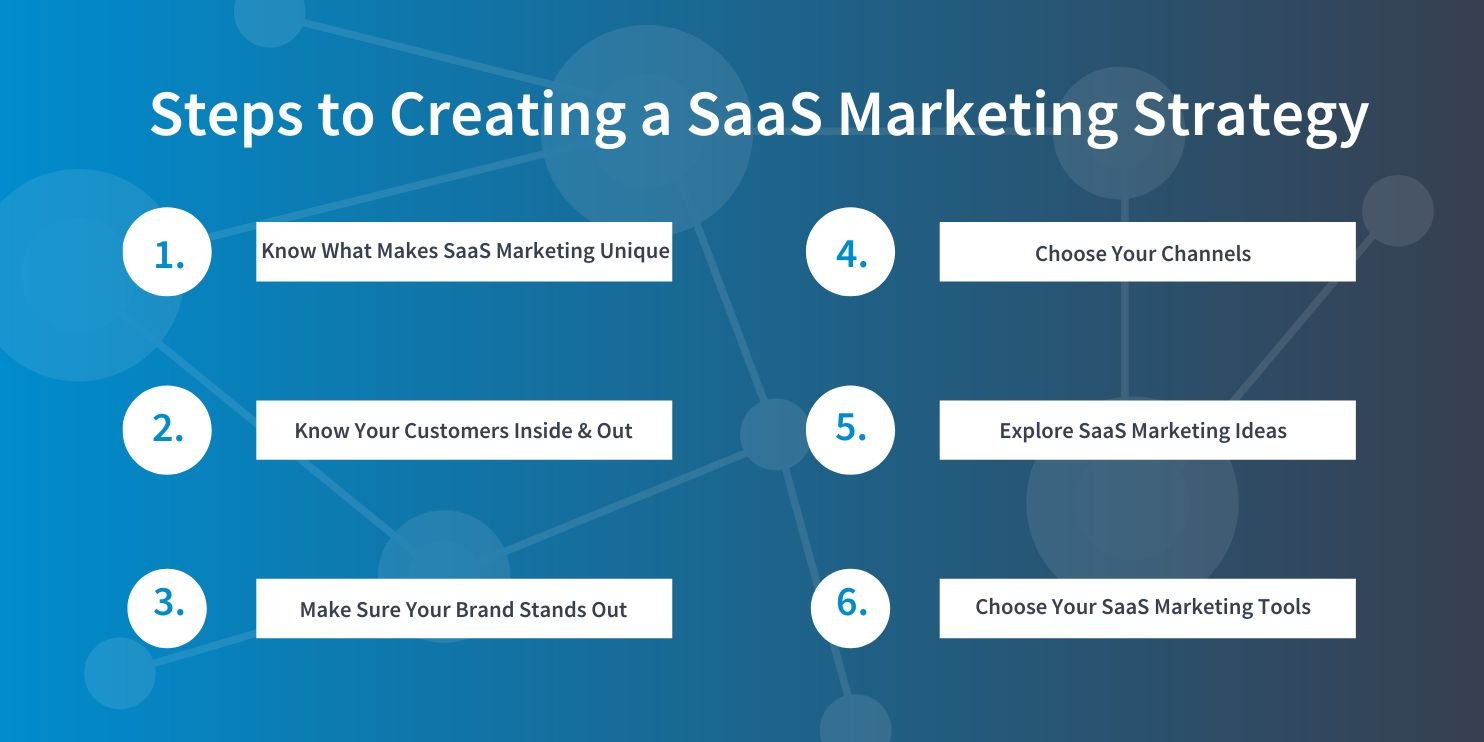“How do I get customers for my SaaS business?” This question keeps even the bravest and brightest marketers up at night. Truly understanding how to market a SaaS product requires adaptability, creativity, research, and a solid strategy.
Easier said than done, we know. As SaaS marketers ourselves, we’ve gone through a ton of trial and error to see what works and what doesn’t. After taking stock of what we’ve learned, DemandJump’s experts came together to show you what an effective SaaS marketing strategy can look like.
Of course, not all SaaS marketing is the same—marketing for SaaS startups is different from creating a B2B SaaS marketing strategy for an established organization, and so on. But there are a few basic steps that apply to marketing for any SaaS business. To help you get the ball rolling, we created the strategy template below.
 DemandJump’s SaaS Marketing Strategy Template
DemandJump’s SaaS Marketing Strategy Template
Step 1: Understand What Makes SaaS Marketing Unique
So, what is the difference between SaaS marketing and normal marketing? Really, there are several factors that differentiate SaaS marketing from all the rest.
- SaaS marketing strategies are meant to do more than draw in new customers, they also need to keep current customers engaged. Finding ways to add value for your existing users leads to more valuable upselling and cross-selling opportunities.
- SaaS solutions are non-physical and complex, making it difficult to illustrate their benefits. Therefore, SaaS marketers must continuously discover ways to best represent the value of their company’s solution and educate their customers.
- SaaS solutions constantly need to change and update in order to keep up with new tech developments and changeable customer needs. This means that SaaS marketing strategies need to be flexible and often require frequent re-evaluation and change.
- A SaaS company’s sales cycle is much faster compared to other industries. Therefore, SaaS marketing strategies need to be primed and ready to quickly draw in high-quality leads. In short, there is very little room for error.
Step 2: Get to Know Your Customers Inside and Out
Now that we have a solid understanding of what sets SaaS apart, it’s time to get to know your customers. This means you need to:
- Determine your Ideal Customer Profile (ICP)
- Narrow down your buyer personas
Your ICP and buyer personas function as the foundation for every part of the SaaS marketing journey. Nailing down your ICP and buyer personas is a critical part of truly understanding your customer’s needs, desires, and motivations. Ultimately, every decision you make must relate back to your customer’s core values. Developing—or refining—these profiles by conducting thorough research and gathering data enables marketers to develop more targeted SaaS marketing strategies. But what are ICPs and buyer personas? Here are the basics.
Ideal Customer Profile (ICP)
Your ideal customer profile represents the perfect-fit company that is most likely to benefit from, and purchase, your SaaS solution. For example, DemandJump’s ICP is SaaS organizations that need content marketing software. Typically, both ICPs and buyer personas are used by B2B SaaS companies, while B2C SaaS companies solely rely on their buyer personas.
Buyer Personas
Buyer personas are much more narrow and personalized than ICPs. For B2B SaaS, these personas are designed to emulate the people that work for your ICP and have buying power within that type of organization. For B2C, buyer personas depict idealized individual consumers who purchase your SaaS solution for their personal use.

For B2B SaaS organizations, multiple people within the ICP companies have buying power. This means their buyer personas will revolve around the specific job titles of those decision makers, and that more than one buyer persona will need to be targeted within an organization. Here are some examples of positions that are often used as B2B buyer personas:
- VP of Marketing
- VP of Finance
- Chief Sales Officer
In the B2C space, buyer personas are focused on individual types of buyers rather than a collective group of decision makers. This means the SaaS marketing strategy should appeal to multiple types of customers and relate to them on an individual basis.
Ultimately, determining your ICP and buyer personas enables SaaS marketers to identify the ideal qualities and pain points a potential lead should have in order to be the right type of customer for your organization. This information should be used to directly inform your SaaS marketing strategy so you attract right-fit, high-quality leads.
Step 3: Make Sure Your Brand Stands Out in the Crowd
The SaaS market is an extremely competitive space.This means your brand will have to bring some extra flair to the table if you want to get noticed. To present your brand in the best light, you need to identify your Points of Difference (POD) that outline exactly what makes your solution better than your competitors.
For example, DemandJump’s platform shows our customers what content should be created to increase first page rankings and drive positive outcomes. We do this by supplying high-value keyword insights and using our revolutionary Pillar-Based Marketing methodology. Ultimately, our strategy earned us 91 first page search rankings in less than five months. These differentiators set us apart from our competitors that don’t offer any guidance related to content strategies as a whole.
When outlining your primary PODs, it’s vital to ensure that each POD clearly benefits your customers.This allows them to quickly recognize your brand as the solution to their pain-points.
Step 4: Choose Your Channels
After you’ve identified your ICP, buyer personas, and PODs, it’s time to explore which marketing channels will help you gain the traction you need to drive conversions. Oftentimes, digital marketing for SaaS companies includes using a combination of channels to maximize lead generation. So, what are SaaS marketing channels? Let’s take a look.
Paid Channels
Paid media channels are marketing channels that require you to pay to increase your traffic. Paid channels are an excellent tool because they offer:
- Quick results and quantifiable return on investment
- Targeting capabilities that allow SaaS marketers to easily engage customers who align with their buyer personas
Examples of Ideal Paid Channels for SaaS:
- Paid social
- Paid search
- Search engine marketing tactics
- Display ads
Owned Channels
Owned media channels are owned by the SaaS company. Although it takes a little bit of time to create owned materials, they can often be recycled and used throughout multiple stages in the marketing funnel, making them very valuable. Owned media channels give SaaS marketers complete control over their messaging and foster creative storytelling to routinely engage new and existing customers.
Examples of Ideal Owned Channels for SaaS:
- Website content
- Social media posts
- Email marketing
Earned Channels
Earned channels involve building relationships and using those relationships to your advantage. This typically involves creating public relations campaigns. Although this takes some time, promoting a SaaS solution through earned channels helps to increase the company’s credibility and build greater awareness.
Examples of Ideal Earned Channels for SaaS:
- Press releases
- SEO
- Third-party reviews
- Referrals
- Backlinking
- Guest appearances on podcasts, TV shows, YouTube channels, etc.
Ultimately, to choose the right channels for your SaaS marketing strategy you should take a deep dive into the following questions:
- What has worked for us in the past?
- What are your customers interested in? What answers are they searching for?
- Which topics are trending in your industry? How do they apply to your solution?
- What are the main channels your customers use?
Step 5: Explore Multiple SaaS Marketing Ideas
As an industry filled with innovators, SaaS is constantly evolving. This means marketers need to mix things up when developing a strategy. Here are three examples of SaaS marketing tactics you can use to spice up your SaaS marketing mix.
Content Marketing
It’s no secret that content marketing is an extremely lucrative marketing tactic for SaaS organizations. In fact, one source stated that SaaS companies that leverage content marketing enjoy returns of as much as 647% on their investment. Content marketing is extremely versatile and can be used to:
- Develop a consistent brand presence
- Attract more web traffic
- Generate high-quality leads for free
- Educate your customers on the nuances of your product
- Provide helpful information to your customers
- Foster trust between your organization and its customers
Additionally, content functions as an asset and increases in value overtime, making it a smart investment. Looking for content inspiration? Check out our Guide to Creating Great Website Content.
Search Engine Optimization (SEO)
SEO is absolutely critical if you want people to be able to discover and interact with your content. On a basic level, here are the main ways you can tackle SEO:
- Create valuable content that educates, entertains, and resonates with your audience. This means your content will be linked to and shared, generating more traffic and drawing in more leads.
- Develop an extensive keyword and internal linking strategy.
- Audit your website’s user experience and fix any bugs.
Learn more about how to effectively approach SEO in our comprehensive guide!
Freemium Subscriptions
Offering freemium subscription packages help draw in customers by letting them experience your solution first-hand. As freemium customers explore your solution, they’ll (hopefully) begin to fall in love with your platform and upgrade to a paid subscription.
This tactic helps SaaS marketers and salespeople gauge buyer intent and allow your customers to incorporate your solution into their everyday operations. Freemium models also help to lure in leads without directing all of your resources towards expensive ad campaigns or more sales positions.
In order for a freemium model to work, it’s vital that you make the onboarding process as educational and seamless as possible. This often involves conducting a few training sessions, creating and sending resources, and offering extensive customer support.
Step 6: Choose Your SaaS Marketing Tools
On a basic level, the following types of tools should be used when marketing SaaS products.
Analytics Tools
In order to achieve greater insight into the impact of every marketing effort, SaaS marketers need data—and lots of it. Marketing analytics tools help you monitor and forecast the performance of your marketing campaigns. Typically these tools will track metrics like:
- Aggregate marketing data from multiple channels
- Return on ad spend
- Return on marketing investment
- Cost-per-lead
- Cost-per-click
Email Marketing Tools
Because email marketing is a vital tactic for SaaS companies, it’s worthwhile to invest in the proper tools. Email marketing tools are most often used to:
- Develop emails/newsletters
- Send mass messages
- Test the success of messages
- Optimize email campaigns
- Record data like open rates, click-throughs, conversions, etc.
- Report on the success of your campaigns
A/B Testing Tools
Marketing is all about trial and error, especially when it comes to SaaS marketing. Because SaaS solutions are constantly evolving, marketers need to explore what tactics work best depending on the version of the platform they’re promoting. This is where A/B testing comes in. A/B testing tools allow marketers to enable you to:
- Easily test and compare different types of campaigns
- Learn how to improve your conversions
- Decide what tactics provide better digital experiences
- Better understand how your customers prefer to hear from you
In the end, A/B testing tools help you quickly gain the insights you need to improve your marketing tactics and the overall customer experience.
SEO Keyword Research Tools
We mentioned content creating and SEO keyword research a couple of times throughout our strategy template. That’s because SEO and content marketing are both absolutely critical in SaaS marketing. Keyword research and SEO tools streamline the process of selecting high-value keywords that match your target audience’s search intent and boost your organic traffic. More advanced solutions, like DemandJump, even help you create your entire content strategy that’s built to rank. Our platform enables you to:
- Align your content strategy to match the needs of your audience
- Automate keyword research for every piece of content
- Analyze the success of your content and develop future plans
 Go Forth and Strategize!
Go Forth and Strategize!
And there you have it—that’s what it takes to build a SaaS marketing strategy! If you’re interested in learning more about all things marketing, check out our webinars or give our podcast a listen.












